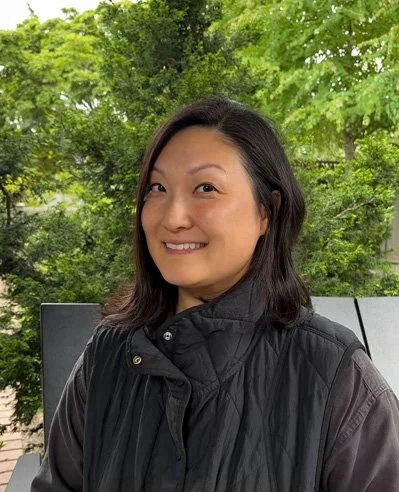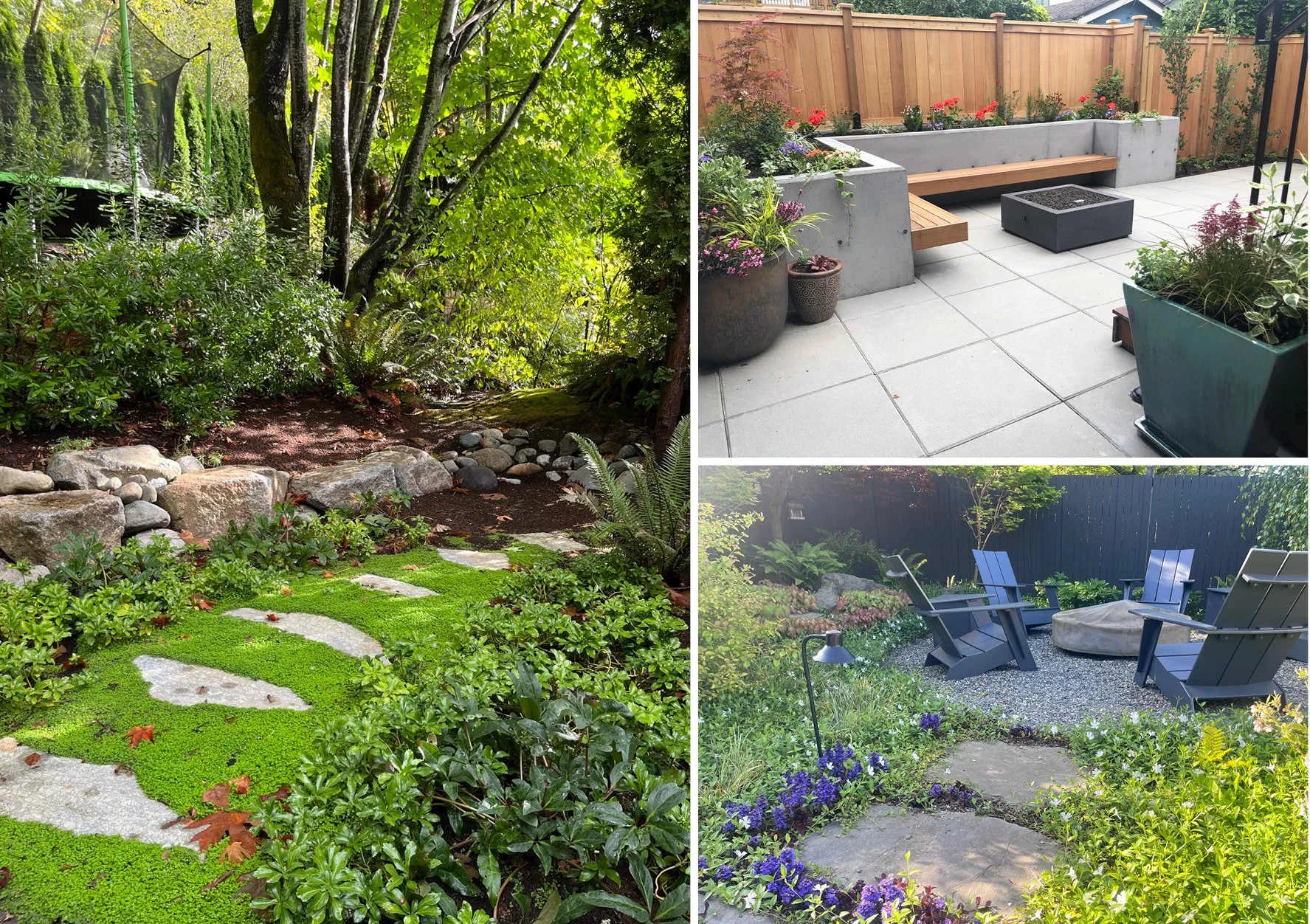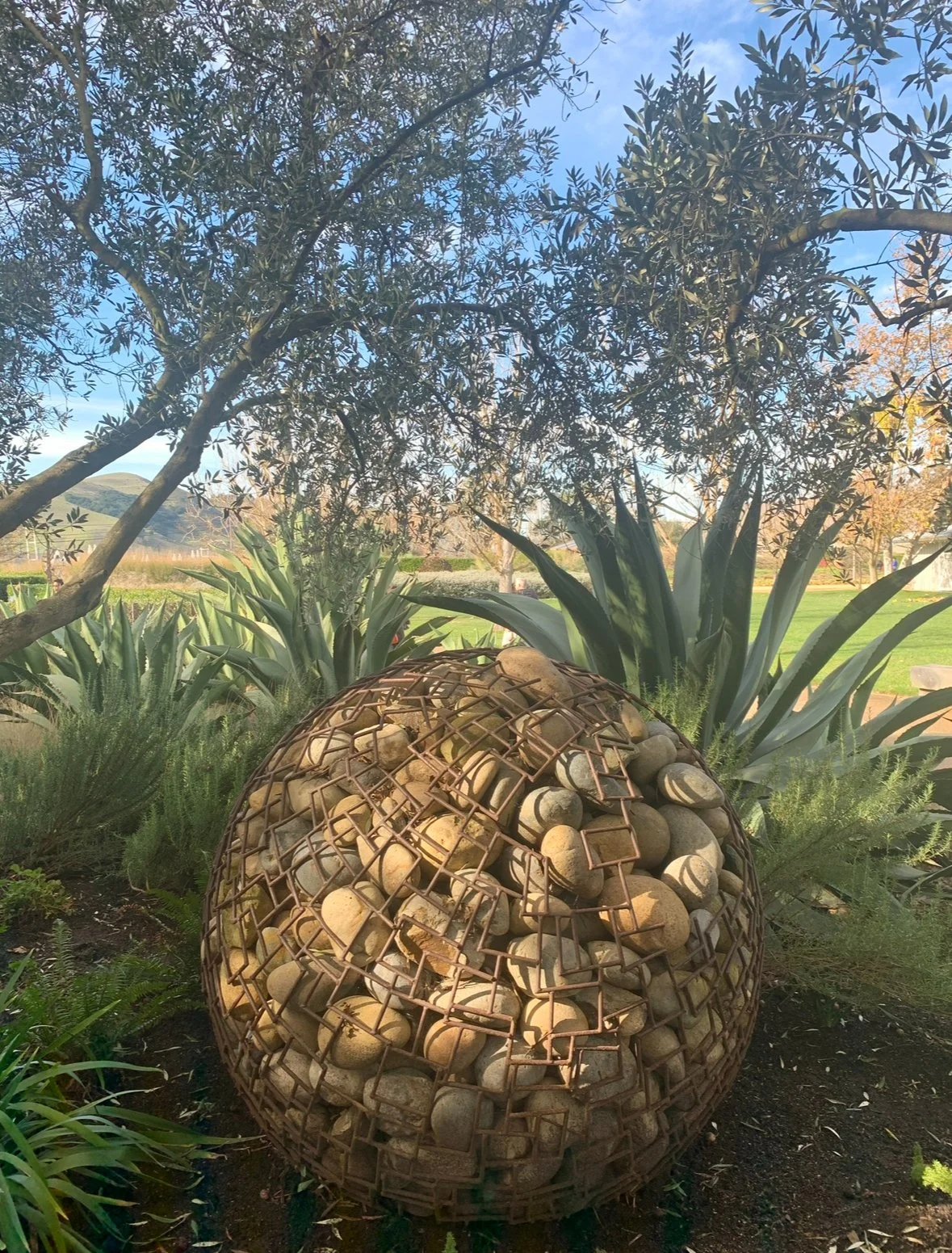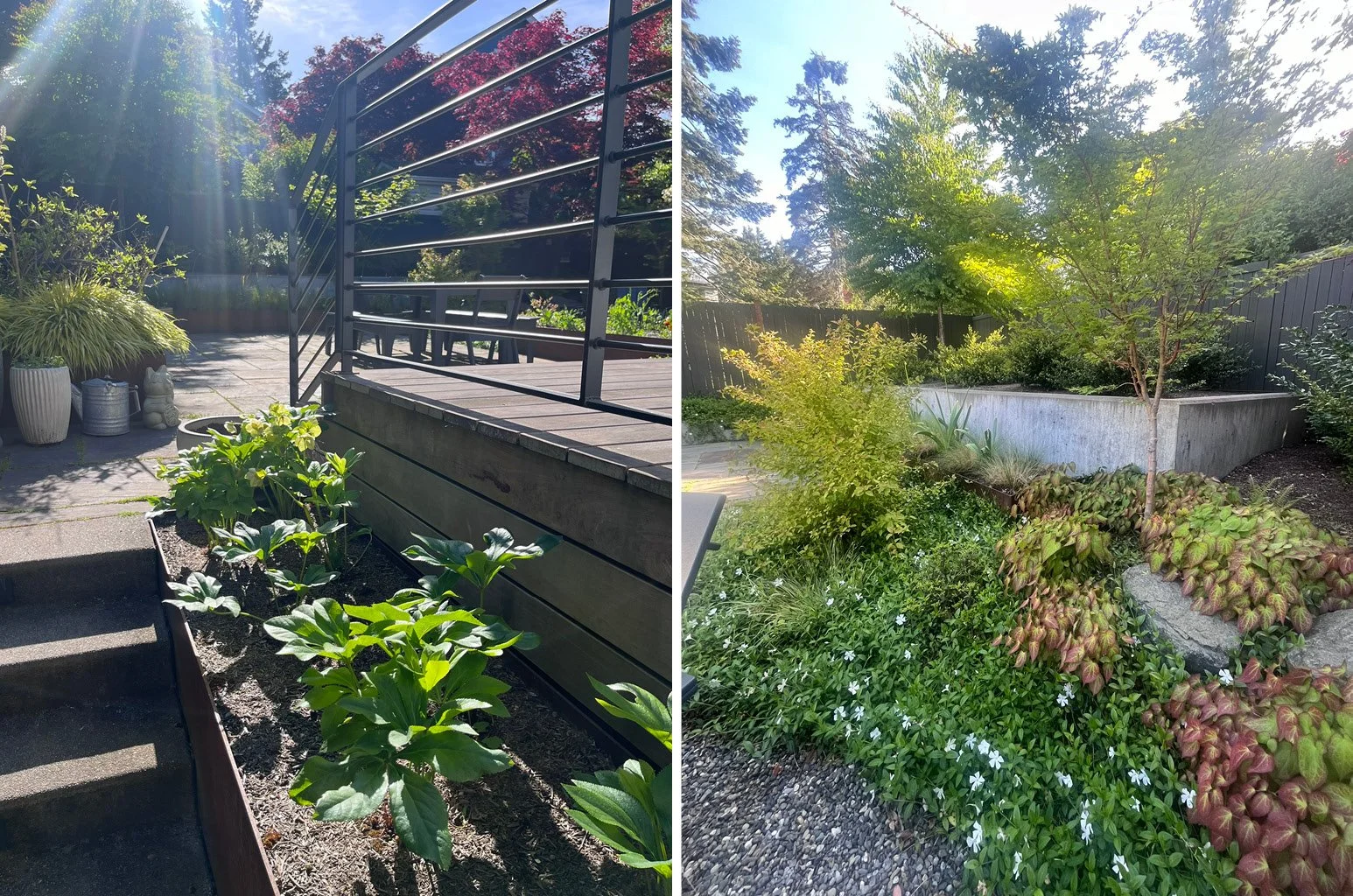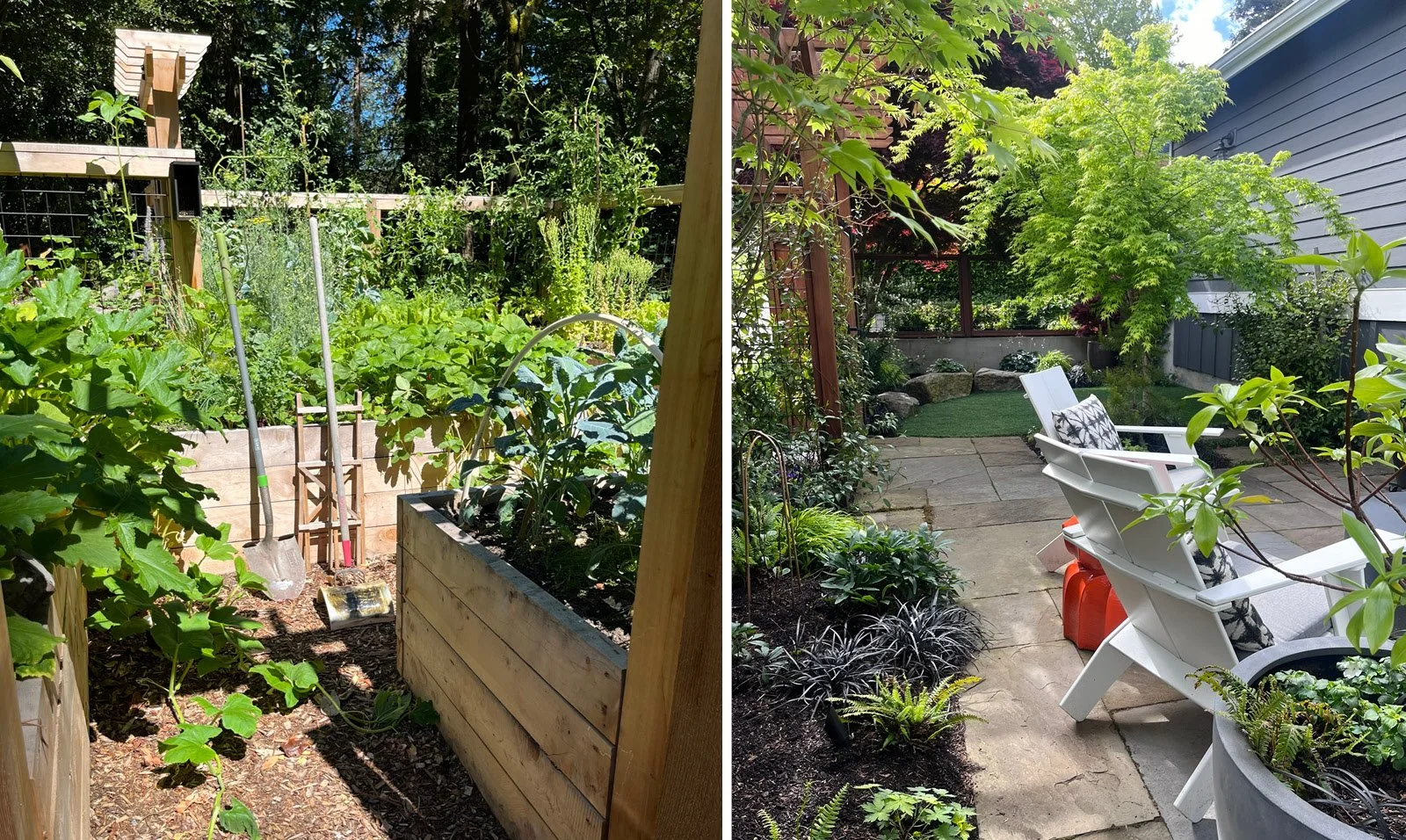Featured Designer | Jen Murphy
August 2025
Owner and Designer at Paperbark Landscape Design
All photos courtesy of Paperbark Landscape Design
This quarter Jen Murphy shares her design philosophy, process and what inspires her.
Jen Murphy, Owner and Designer at Paperbark Landscape Design
How would you describe your design style?
I describe my style as modern minimalism meets wild naturalism. I’m drawn to the Japanese wabi-sabi concept of imperfection, simplicity, and natural materials and patterns. I believe a garden should support everyday life. Whether it’s a space for gathering with friends, a place for children to explore, or just a view to watch the seasons change. I aim to create environments that bring joy and enrich the rhythm of daily living.
Every garden I design is uniquely tailored to reflect my clients’ lifestyles and needs. My goal is to make each outdoor space feel like a natural extension of its surroundings. I draw inspiration from the home’s architecture, the neighborhood’s character, and the existing views or sightlines. I’m especially drawn to natural materials and plantings that echo the way plants grow in the wild.
Three distinct garden spaces that invite relaxation, reflection, and connection with nature.
Sculptural stone and steel sphere nestled among plants at Cornerstone Gardens in Sonoma, California.
Who inspires you and your designs?
Nature is my greatest teacher. I’m constantly inspired by the way plants interact with one another in the wild, and how light shifts through the seasons. That sense of organic, evolving beauty is something I try to weave into every project.
Travel is another big influence. Two places I return to for inspiration are the gardens at Cornerstone in Sonoma, California and the Allison Inn and Spa in Newberg, Oregon. I love how sculpture is thoughtfully integrated into the landscape, sometimes nestled among grass, other times perfectly framed by trees. They are complemented by the surrounding plantings rather than competing with them. The spaces in these gardens always add interest and emotion.
I’m also inspired by my clients. Every project is a conversation and collaboration. Sometimes the concept of a design comes from a childhood memory, a meaningful travel experience, or even a feeling someone wants to evoke. Listening closely to those stories and aspirations is where my designs start to take shape.
Is your focus design? Or do you also manage installation, build, and maintain gardens?
My focus is primarily on design, and I also manage the installation of most of my projects. I typically collaborate with InHarmony Sustainable Landscapes for installations. They are a great group of people, and I feel fortunate working with and learning from them every day.
While I don’t offer ongoing maintenance, I always design with long-term sustainability in mind. I make plant choices that are regionally appropriate, will require little-to-no pruning, and are low maintenance.
Layered planting and custom hardscape create inviting transitions between garden spaces.
Describe a typical design project and your process.
While every project is different, most begin with a bit of online research to understand the property’s context. Sometimes this reveals important details like if the site is within an Environmentally Critical Area (ECA). Understanding the property can shape the conversation during the first on-site consultation. That initial visit is a chance to walk the space, hear the client’s vision, and discuss possibilities. Afterward, I put together a tailored design proposal outlining the scope and next steps.
Once we move forward, clients complete a design questionnaire to help clarify their style, priorities, and how they hope to use the space. I then return to take measurements and conduct a more in-depth site analysis. The design phase typically starts with a couple of conceptual designs. These are broad layout ideas, planting inspiration, and material palettes that spark conversation. From there, things become more collaborative. Some projects move quickly to final plans; others involve multiple rounds of revisions and evolving ideas.
Depending on the complexity, I may also dive into permitting research or coordinate with architects, engineers, or contractors. Regardless of the path, the goal remains the same: to create a cohesive, functional, and beautiful landscape that feels like a natural extension of the client’s home and lifestyle.
Edible garden and backyard seating area, designed for both function and relaxation.
What experiences have you found to be most rewarding?
The most rewarding part of my work is seeing people connect with their new space. There’s something very fulfilling about walking through a finished garden with a client and seeing their eyes light up, or hearing from them months later that they spend every evening on their patio now, or that their kids play outside more than ever.
One of my favorite moments came years after a project had wrapped up. A client reached out to share how their garden had become part of their family’s daily life. They sent photos and stories about how they use the space now and which plants have become their favorites. It was really nice to hear and such a great reminder of why I love what I do—creating spaces that help people enjoy being outdoors and connect with nature.
Jen Murphy
Landscape Designer
Paperbark Landscape Design LLC
Instagram

